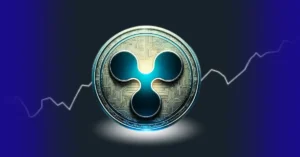Bitcoin Price Hits $61K, But Investors Still Prefer Stocks and Bonds

Although Bitcoin (BTC) has gained 21% since retesting the sub-$50,000 level on August 5, the price has struggled to hold above $62,000. Meanwhile, the S&P 500 index has fully recovered and is now trading just 1 percent off its July 16 high.
Bitcoin faces a number of conflicting trends, with derivatives reflecting low buyer interest and macroeconomic indicators suggesting traders are moving away from cash positions. Interestingly, these stock market gains have coincided with a significant decline in US Treasury yields, indicating strong demand for these traditionally safe-haven instruments.
In essence, traders are willing to accept lower returns on fixed-income assets, perhaps indicating growing confidence in the Federal Reserve's (Fed) strategy to curb inflation without triggering a recession. The Fed is widely expected to cut interest rates on September 18 after keeping rates above 4 percent from December 2022.
Investors are focusing on stocks and bonds ahead of economic uncertainty.
Strong demand for government bonds, traditionally considered the safest asset class, does not reflect confidence in the purchasing power of the US dollar. If investors begin to perceive the US government's fiscal position as unsustainable due to its ever-growing debt, their first reaction will be to seek protection in safe assets. If this is the case, Bitcoin investors may have reason to be somewhat concerned, despite their generally long-term view.
The US Dollar Index (DXY) recently fell to its lowest level since December 2023, losing strength against other major global currencies. Some analysts suggest that DXY has an inverse correlation with the price of Bitcoin.
US Dollar Strength Index (DXY) 50-day correlation with Bitcoin/USD. Source: TradingView
Historical data shows that the inverse relationship between the DXY index and Bitcoin has been clear in the past, but this relationship has weakened in recent months, with the relationship fluctuating between -40% and +40%. This recent variability reduces the statistical strength of the inverse correlation argument. However, the lack of a clear correlation does not completely disable the possibility of Bitcoin price returning to the $72,000 level.
Similarly, recent gains in the S&P 500, which may seem counterintuitive, reflect broader investor confidence in holding positions in cash. This sentiment is naturally positive for Bitcoin's outlook. The large international companies are highly profitable, offering potential divisions or share buybacks. These factors make them an effective hedge, especially given the large cash reserves held by tech giants.
Bitcoin derivatives indicators show resilience and potential price volatility
To gauge how professional Bitcoin investors are positioning themselves, it is important to analyze the BTC futures price. Under normal market conditions, monthly contracts should trade at a 5% to 10% annual premium to the spot markets.
BTC 2-month future annual premium (base rate). Source: Laevitas.ch
Bitcoin futures premium recently dropped to 6%, the lowest level since October 2023. Although this is still in neutral territory, it borders on hidden territory. That's a contrast to late July, when the premium for Bitcoin rose above $68,000 to more than 10%.
One should also examine BTC options data to determine if this activity is isolated to futures markets. The imbalance between the price of a call (buy) and put (sell) option in an independent market should not exceed 7% in either direction. If traders are increasingly turning bearish, demand for put options will increase, causing the options skew indicator to go above +7%.
Related: 2 Key Bitcoin Metrics Point to Bull Cycle – ‘No Bubble' in Sight
Bitcoin 1-month options delta skew by derbit. Source: Laevitas.ch
As indicated by the delta skew, there is currently balanced demand for both calls and options in contrast to the futures market. This has been seen for the past few weeks, which suggests that professional traders are not particularly concerned about Bitcoin's ability to return to the $62,000 level. Traders are likely to refrain from increasing their exposure to cryptocurrencies ahead of the Fed's September decision.
This article is not intended for general information purposes and should not be construed as legal or investment advice. The views, ideas and opinions expressed herein are solely those of the author and do not necessarily represent the views and opinions of Cointelegraph.












